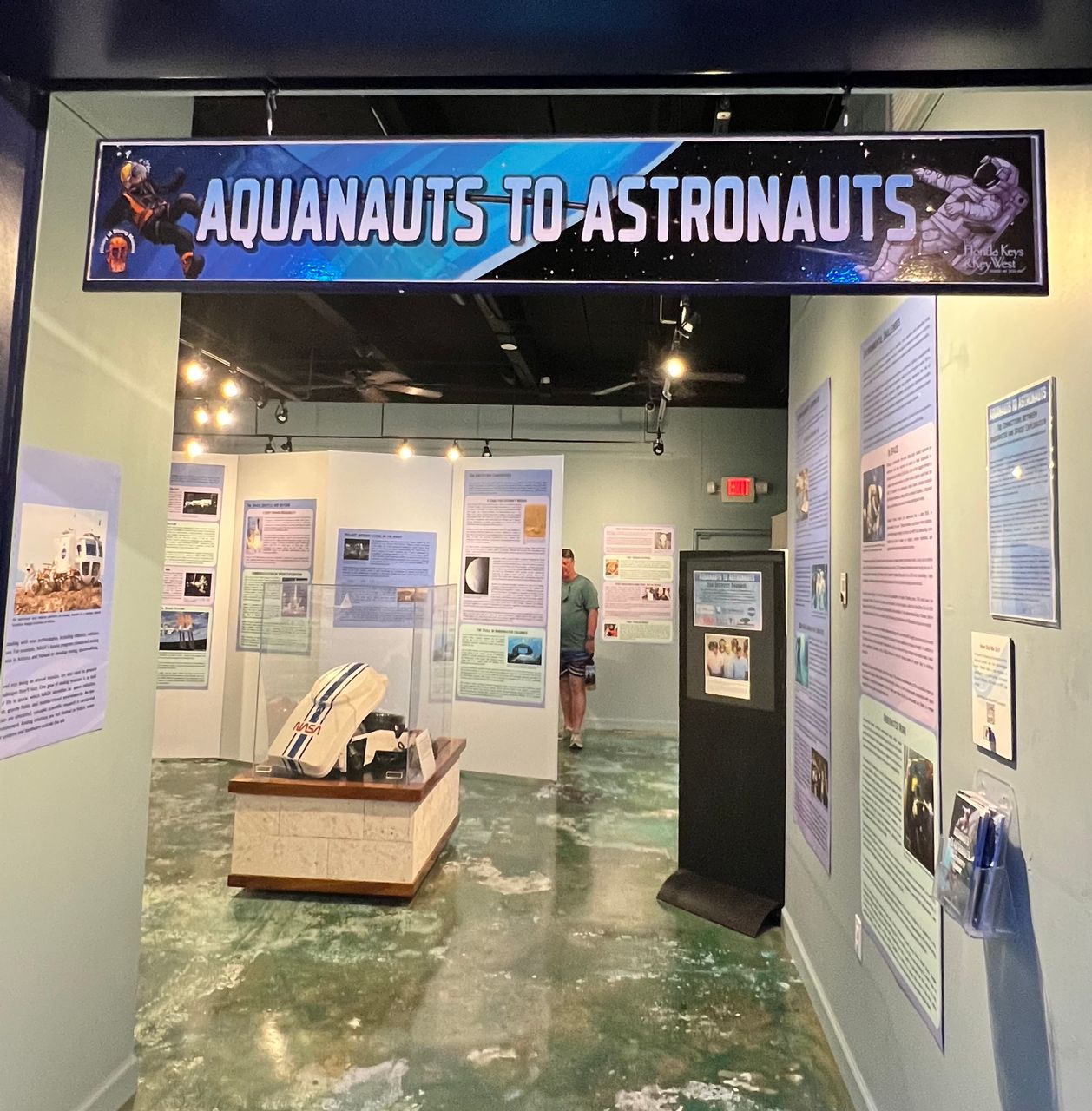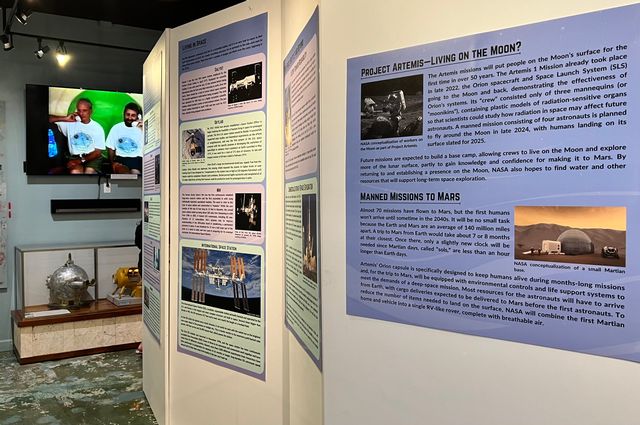‘Aquanauts to Astronauts’ Explores the Relationship Between Diving and Space Travel
SLAMORADA, Florida Keys — Aquanauts to Astronauts, the featured exhibit at Islamorada’s History of Diving Museum, examines the fascinating relationship between diving and space exploration, including how NASA uses both diving and living underwater to train future astronauts.
Living in the extreme environments underwater and in space both ramped up in the 1960s, with obvious parallels and interchanges between them. Both environments have harsh conditions and high associated costs of living and working, and for both there are dramatic impacts when a failure occurs.
The exhibit focuses on the similarities and differences between space and deep ocean habitats, along with underwater training for astronauts — some involving the Florida Keys.
Visitors can view the suits and equipment used in space and underwater training missions to protect the human body from either the lack of pressure in space or crushing pressure at depth.
The exhibit also explores commonalities between the two extreme environments including isolation from life on Earth’s surface, very close quarters, and challenging situations related to both food consumption and toilet solutions.
Visitors to the exhibit learn about NEEMO — the NASA Extreme Environment Mission Operations project — that since 2001 has been sending groups of astronauts, engineers and scientists to live in Aquarius, the world's only undersea research station, for up to three weeks at a time.
Aquarius is located 3.5 miles off Key Largo in the Florida Keys National Marine Sanctuary. Deployed next to deep coral reefs 62 feet below the surface, the habitat and its surroundings provide a convincing analog for space exploration.
Aquarius is an ambient pressure habitat, which means the interior atmospheric pressure is equal to the surrounding water pressure. By living in Aquarius and working at the same depth on the ocean floor, NEEMO crews can remain underwater throughout their mission. They go out in dive gear and perform activities such as shoveling the sea floor, just as an astronaut would shovel to collect soil samples on another planet.
Other notable elements of the exhibit include examples of many of the “firsts” in space, including historic trips by the first animals and humans.
Aquanauts to Astronauts also features a 16-minute video of a 1995 conversation from the seafloor to the space shuttle Endeavour. Mercury astronaut Scott Carpenter and pioneering aquanaut Ian Koblick, inside Key Largo’s Jules’ Undersea Lodge on the seafloor, speak with astronaut and former commercial diver Michael Gernhardt in space aboard Endeavour.
The Jules’ habitat is the site of high-profile scientific missions as well as the world’s first underwater hotel for adventurous divers.
Gernhardt, a former commercial deep-sea oilfield diver who became a NASA astronaut, attended the exhibit’s preview reception and hosted an “Immerse Yourself” presentation at the museum titled “From the Deep Sea to Outer Space,” detailing his career in both extreme environments. Now retired from NASA, Gernhardt works for Jeff Bezos’ Blue Origin, leading all lunar surface operations for the contractor selected by NASA to land astronauts on the moon.
Aquanauts to Astronauts is to be on display through Dec. 31 at the History of Diving Museum, located at mile marker 82.9 bayside in Islamorada. The museum and store are open from 10 a.m. to 5 p.m. every day except Thanksgiving, Christmas Day and New Year’s Day. The museum is pet friendly for well-behaved leashed animals under 50 pounds. Active members of the military are offered free admission every day.
Exhibit and museum information: divingmuseum.org
The exhibit focuses on the similarities and differences between space and deep ocean habitats, along with underwater training for astronauts — some involving the Florida Keys. Photos by JoNell Modys
Visitors can view the suits and equipment used in space and underwater training missions to protect the human body from either the lack of pressure in space or crushing pressure at depth.
The exhibit features a video conversation from the seafloor inside the Jules Undersea Lodge to the Space Shuttle Endeavor.
The exhibit explains NEEMO — the NASA Extreme Environment Mission Operations project — that sends groups of astronauts and scientists to live in the world's only undersea research station located 3.5 miles off Key Largo.




